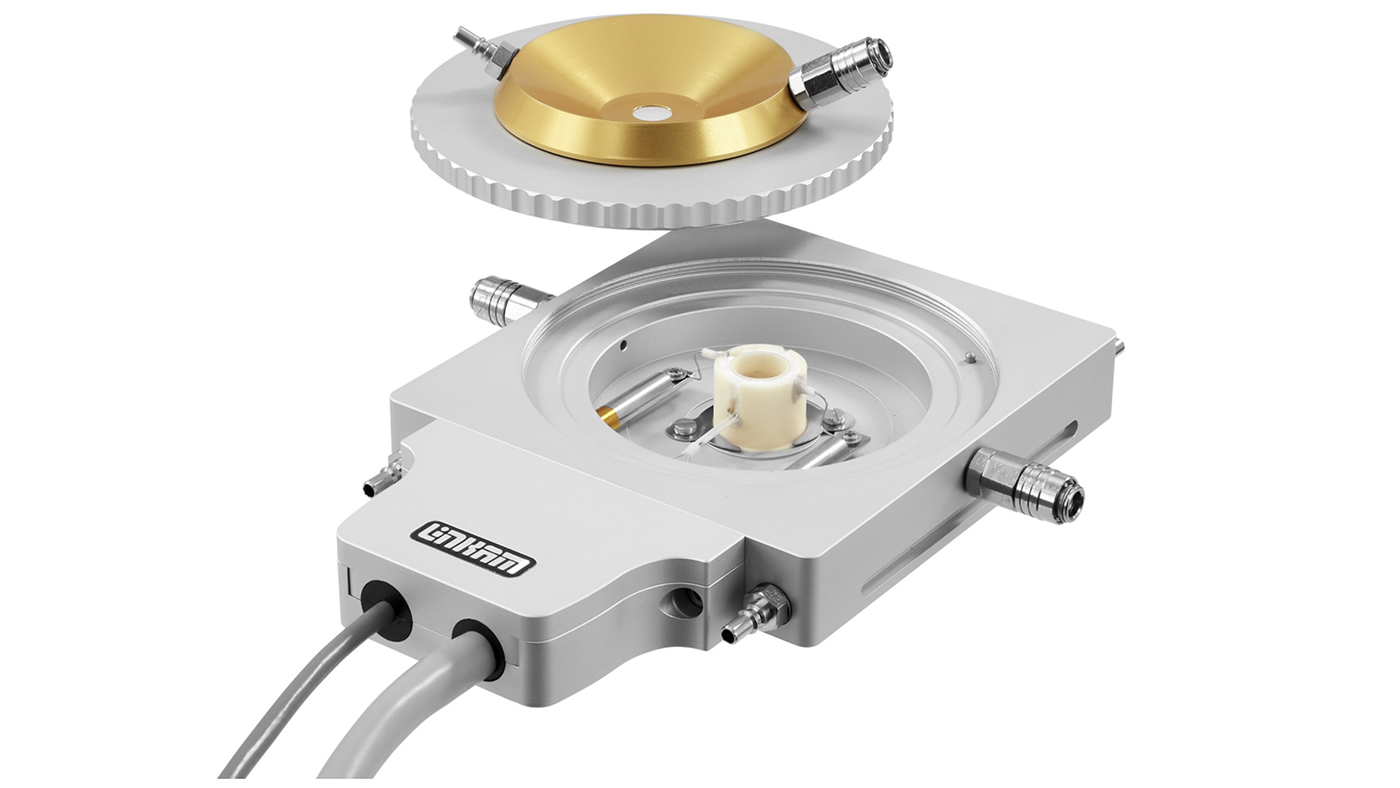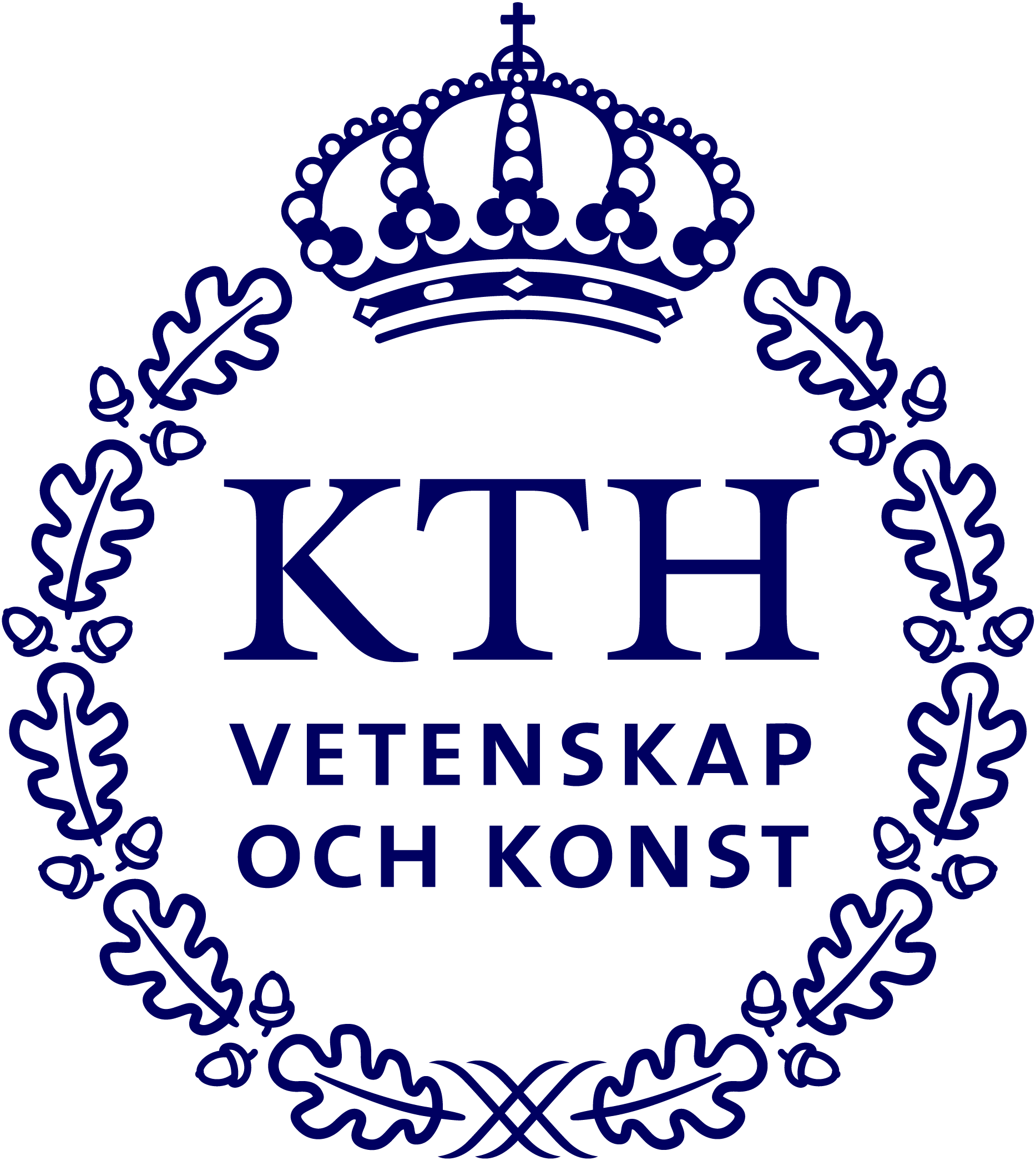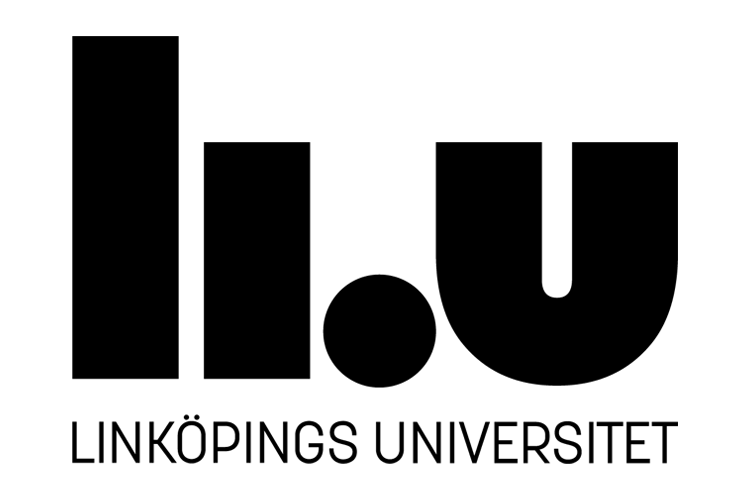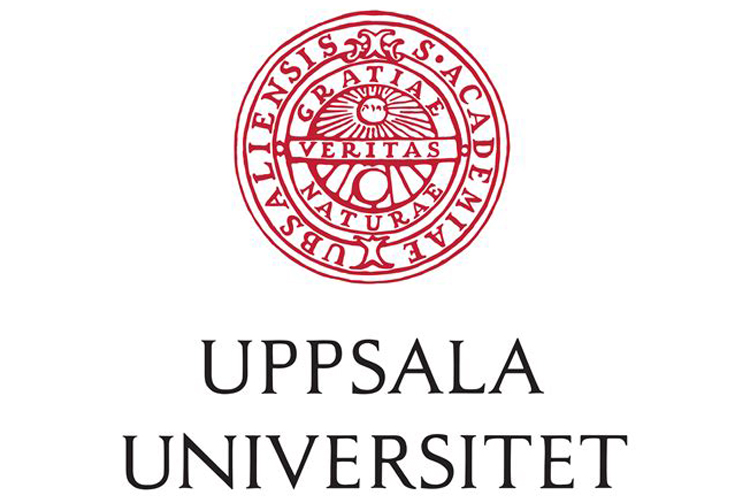Linkam furnaces
Linkam Furnaces can operate in a wide temperature range of 77 K up to 823 K with high precision of ±1 K - enabling temperature dependent characterisation of samples such as ceramics, alloys, high temperature polymers and geological fluid inclusions, with information capture via light microscopy, Raman and X-rays.

Description
The Linkam Furnace/Cryostat can operate in a wide temperature range of 77 K up to 823 K with high precision of ±1 K. The possible heating rates are between 1 and 20 K/min. It can be loaded with a capillary or with a metal rod with diameters of up to 0.9 mm and has no spinning capability.
The sample is placed inside the ceramic sample cup where it is heated from underneath as well as from the sides. A ceramic heat shield is placed over the top to prevent heat escaping from this micro-oven. The temperature can accurately be heated up to 1500°C at a maximum rate of 200°C/min. The stage body and large diameter quartz lid window are kept at a safe temperature by sealed circulating water.
Precision quick-release gas connectors at the sides of the stage body can be used to purge the sample chamber with inert gas. A system requires both a TS high temperature stage and a T96-S controller, which is available with either NEXUS software for computer control, or a LinkPad touch screen for stand-alone control. Application-specific versions of the stage that are vacuum compatible, or have electrical connections, are also available.
Please be aware, that you have to make calibration measurements by yourself within your requested beamtime, since the temperature highly depends on the actual setup.
Specifications
For specifications of the TS1500V, see the manufacturer's website: www.linkam.co.uk/ts-series-brochure-3
For specifications of the THMS600, see the manufacturer website: www.linkam.co.uk/thms600
Examples of heat treatment studies
Jiang et al. used the THMS600 furnace in order to heat Cu-Zr-Al metallic glasses with various sulfur compositions (from 0 to 3 %), ramping up the heat in 0.333 K/s steps from room temperature up to ~ 800 K. During the thermal treatment, X-Ray Diffraction (XRD) data was acquired in-situ. In this experiment, the temperature where the amorphous Cu-Zr-Al glass started to transform into Cu10Zr7 and FCC-𝜏3 crystalline phases was probed with a time resolution of 5 s (corresponding to a temperature resolution of 1.665 K). These experiments enabled the identification of the rapid change in the primary crystalline phase that form depending on the sulfur content, which shift from a majority of Cu-Zr-Al eutectic phases to the fcc-τ3 phase after addition of 0.75 at.% sulfur.
Using a Fe-Cr system with 30, 50 and 70 at.% of ferromagnetic Fe, Weissitsch et al. performed heat ramping at 10 K/min followed by an isothermal holding at 520 °C for 1 h and subsequent fast cooling during in-situ XRD. The authors observed the grain size evolution and linked it to magnetic properties of the alloy. The experiments also allowed to show that no significant Fe-Cr demixing was present in the alloy after 1 h annealing at 500 °C (from the absence of broadening of the Fe-BCC peak and microscopy observations).
Wurster et al. investigated the magnetic properties of nanocrystalline Cu-Co and Cu-Fe by thermal treatment. They performed in-situ thermal treatment and measured the microstructural changes (secondary phases, phase demixing, thermal dilatation…) by XRD during isothermal holding at different temperatures around 500 °C.
Experiments by the above authors were all performed at the Swedish Materials Science beamline, P21.2 branch.
Articles
For further information about the above research cases, see the following publications.
H.-R. Jiang, J.-Y. Hu, N. Neuber, B. Bochtler, B. Adam, S.S. Riegler, M. Frey, L. Ruschel, W.-F. Lu, A.-H. Feng, R. Busch, J. Shen, Effect of sulfur on the glass-forming ability, phase transformation, and thermal stability of Cu-Zr-Al bulk metallic glass, Acta Materialia. 212 (2021) 116923. doi.org/10.1016/j.actamat.2021.116923
L. Weissitsch, S. Wurster, A. Paulischin, M. Stückler, R. Pippan, A. Bachmaier, Nanocrystalline FeCr alloys synthesised by severe plastic deformation – A potential material for exchange bias and enhanced magnetostriction, Journal of Magnetism and Magnetic Materials. 534 (2021) 168017. doi.org/10.1016/j.jmmm.2021.168017
S. Wurster, M. Stückler, L. Weissitsch, T. Müller, A. Bachmaier, Microstructural Changes Influencing the Magnetoresistive Behavior of Bulk Nanocrystalline Materials, Applied Sciences. 10 (2020) 5094. doi.org/10.3390/app10155094



